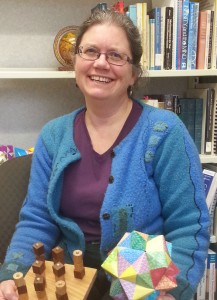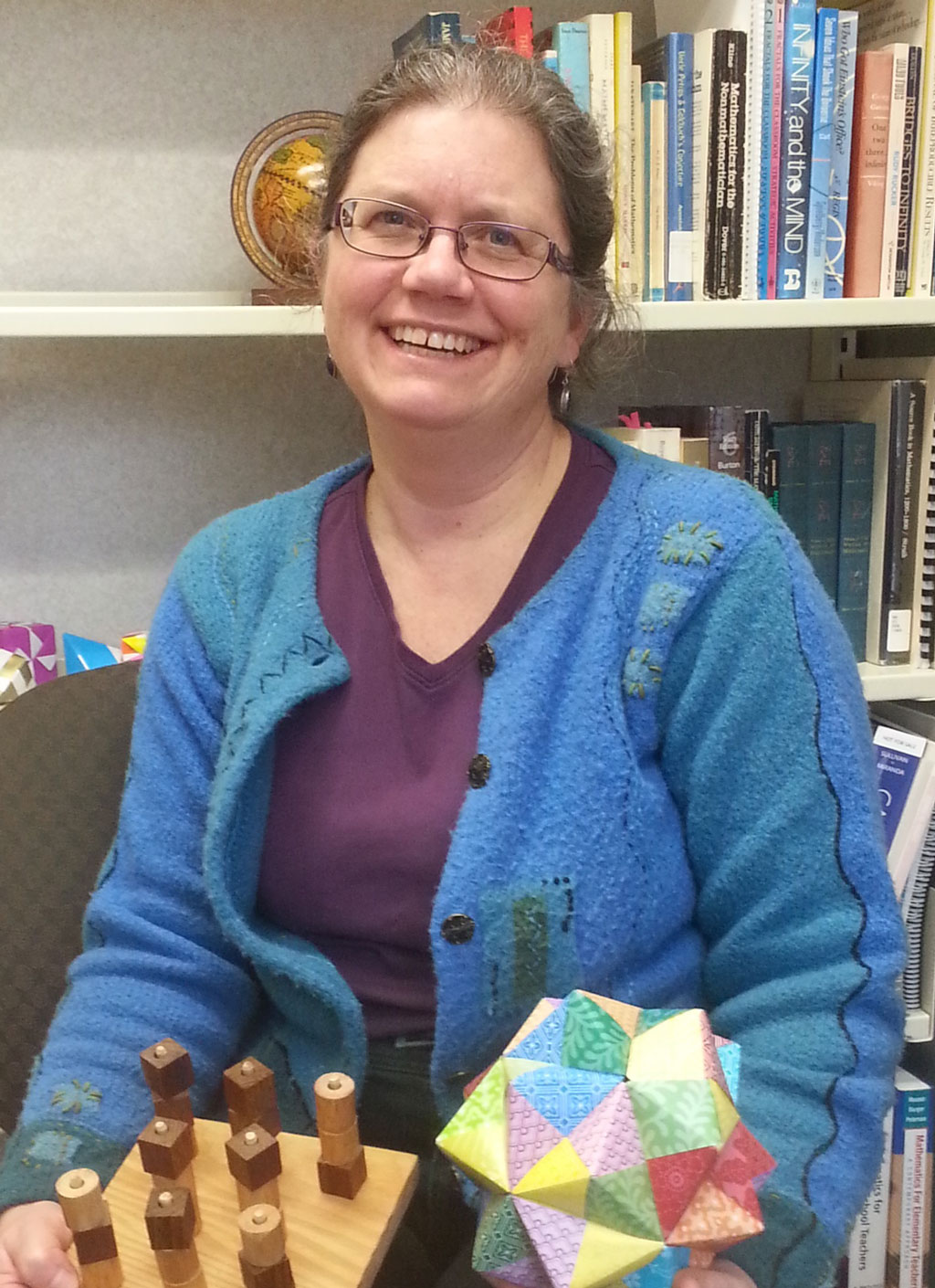By Vanessa Broadbent (The Cascade) – Email
Print Edition: January 28, 2015

Susan Milner has been a math professor at UFV for 26 years. She has taught finance, statistics, and calculus, and now teaches courses like Math for Elementary School Teachers and the History of Math.
Did you have to move to teach at UFV?
Yes. I was teaching in Kelowna at the time.
What kind of a change was that for you?
It’s not as hot here — that was nice. The environment was similar because [Okanagan] was a college and it was a college here, and I really enjoyed that atmosphere. When Okanagan turned into a university, there was a lot of nastiness, and we haven’t had that here.
How would you describe the culture when you first started teaching at UFV?
It was clearly a place that was interested in teaching. My department was all about teaching and that was important. I really enjoyed them — they were funny, they were smart, but they cared about teaching, and it seemed to be a really nice fit.
What kind of courses did you start out teaching?
I taught business math, so financial math, at first-year level. I taught intro stats to all kinds of people, including business students. I did some pre-calculus, and eventually they let me teach calculus.
What was it like?
It was fun. Statistics was remarkably practical, and the business math was even more so. Often, students say, “I don’t understand why I’m doing this, because it doesn’t have anything to do with the real world.” Business math has a lot to do with the real world, so we never had that problem. Statistics was interesting because people often had negative ideas about it and yet it’s something that they’re going to end up using a lot. It was a lot more interesting than I had thought it might be — coming as I do from an algebraic, logical kind of background.
Classes were smaller, so it was really cool to get to know the students well. We still try to do that. Those are my strongest impressions from that time. I like working with adults a lot and there were a lot of them here. We had a higher-than-average age of students here. We have a lot of people coming back as adults and I really like that. It’s a nice atmosphere.
Does that differ from the courses you are teaching now?
Well, we now have statisticians that teach statistics. Now, of course, we have third- and fourth-year courses. I do get to teach the occasional third- or fourth-year course, which is nice. I have a History of Math course that I’m very fond of, that I never could have done before. Because students stay here for four years, I get to see them grow up and change over four years, and that’s different because before we kept them for two years at the longest.
What kind of changes have you noticed while teaching at UFV, in terms of UFV’s place in the surrounding geography and community?
Originally it was a college. The communities fought hard to get the college here and it was respected as a college, and then there was a hard fight to get it to become a university college and then a university. I live in Chilliwack, but the level of support in Chilliwack has always been very high. I don’t think that’s changed; I think it’s still very high. I’m much more involved in the community than I used to be because I do a lot of mathematic outreach things.
What kind of changes have you made in your teaching approaches or methods over time, or have you found one style that works?
I keep trying different things. My goals have not changed. Probably I lecture less, because I have a better idea of how to structure activities. I teach math for elementary teachers, and it’s really important that they experience a variety of activities. Overall, I probably do lecture less, and I have more effective ways of getting students to do things. And because I teach a course, History of Math, that isn’t a prerequisite for anything, I have way more freedom to do what I want. So we have lots of student presentations and seminars and things like that.
Have there been any colleagues or students who have been particularly helpful or influential in what you do as a teacher?
Yes. Jane Cannon, now retired, is one of the best teachers I’ve ever known. She taught math for teachers among other things. She’s an excellent teacher and I learned a lot from her. [There was also] Doug McDowell — he was an excellent teacher and very good at interacting with students, and Linda Riva, who supported all students. She made a point of going to help students that found things difficult. I learned a lot from them. We used to spend a lot of time talking.
I’ve had some fantastic students and it’s been wonderful to watch them. If you think about influencing what I do, when I ask students to do something like a presentation and they go way above and beyond what I imagined, then I think okay, that’s what students are capable of, so I start expecting more. I think that’s partly why my teaching style, as far as I have the freedom in certain classes, has been to ask more and more of them because they produce way above what I expect.
In math there’s a big difference. We teach a lot of surface courses. Most of our stats, most of our calculus, math for teachers, those are courses for other people in other disciplines. Many of them don’t necessarily want to be there. That atmosphere is totally different from a classroom where people want to be. What I can do in that second-year classroom is very different from what I can do in the first. I try to generate as much excitement as I can but there are people who just don’t want to be there. They’re thinking still like high school. That’s pretty hard to work with … you can’t turn everyone around.
What kind of projects have you worked on at UFV?
Lately I’ve been very involved in math puzzles and games. On my sabbatical I visited 200 classrooms from K-12 [and] did puzzles and games in the classroom. I had no idea that that many people would want it. I had thought three or four. I gave almost 20 workshops to teachers about this. There’s a lot of interest. I love my puzzles and games and doing logic things. It’s amazing what people can show that they can do … it doesn’t feel like math [but] it is mathematical thinking. So I’ve been doing a lot of that.
I’ve been also doing a lot of what we call mathematical outreach. I run something called Math Mania where we go into elementary schools. I take a bunch of volunteers from here — we’re going next week to Yarrow Community School — about 20 volunteers, mostly students, some faculty. We invite the students and their parents and we play games. They go like, “This is math?” because most people have some odd ideas about what math is and I think that’s a problem in our society. A lot of what I do is trying to break down those false notions about what it is and who can do it and how it’s valuable. I spend a lot of time doing that.
While we often talk of UFV as a single entity, each student or teacher will take something different out of UFV — how would you describe what you’ve taken out of UFV, and how you’re still changing it?
It’s been 26 years of my life, so it’s certainly had an influence. It’s absorbed most of my life because I’m passionate about teaching and because it really has been teaching-oriented. I can’t imagine doing anything else really, than working with students and colleagues.
This interview has been edited for length and clarity.


